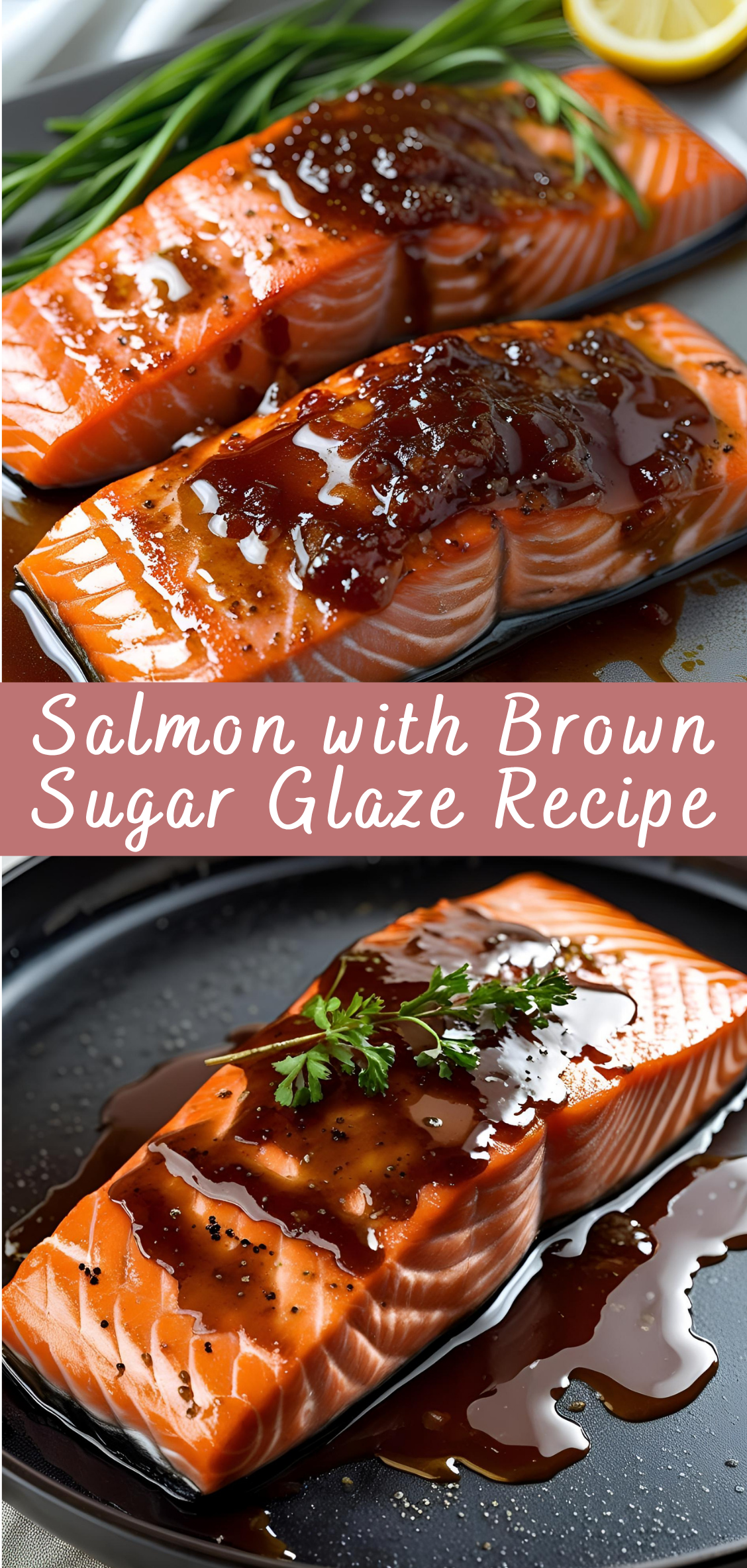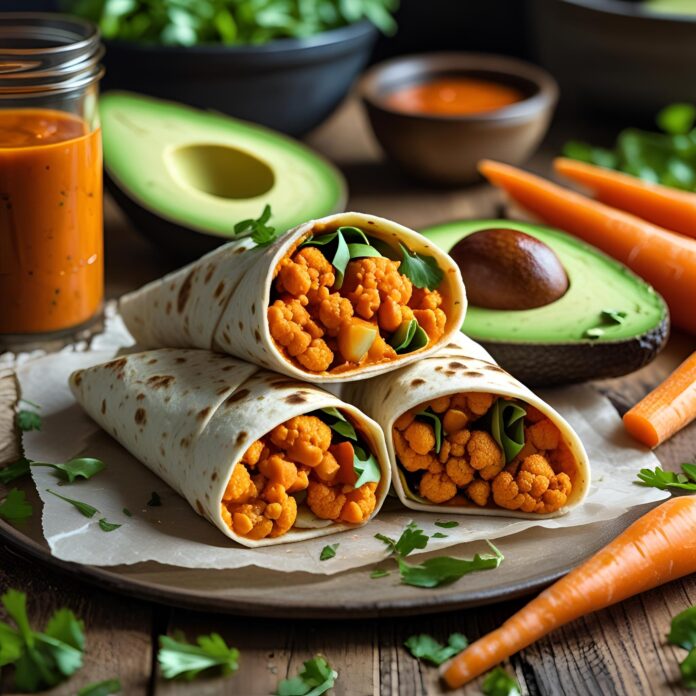Salmon with Brown Sugar Glaze Recipe
Few ingredients strike the balance between elegance and everyday accessibility quite like salmon. Rich in flavor, naturally tender, and packed with nutrients, it’s a fish that thrives under countless preparations—from raw sashimi to slow-roasted fillets. But among the many ways to bring out the best in salmon, one method stands apart for its simplicity, stunning results, and universal appeal: a brown sugar glaze.
Salmon with Brown Sugar Glaze is a dish that feels both indulgent and wholesome. The glaze, a carefully calibrated blend of sweetness, acidity, spice, and depth, clings to the fish as it bakes or sears, forming a glossy, caramelized surface that enhances every bite. Each forkful delivers a harmony of contrasts: the buttery flake of tender salmon offset by the slightly sticky bite of brown sugar and the subtle kick of spices layered in the glaze. It’s a dish that satisfies the senses—sweet, savory, smoky, and just a little spicy, depending on your interpretation.
This recipe isn’t about reinventing the wheel. It’s about refining a classic until it becomes yours. Whether you’re cooking for a weeknight dinner, hosting a small gathering, or preparing a celebratory meal, glazed salmon offers flexibility without compromise. It adapts easily to baking, grilling, or pan-searing. It works just as well with a side of roasted vegetables as it does on top of a grain bowl or flaked into tacos. It’s fast enough for a 30-minute dinner yet refined enough for a plated entrée at your next dinner party.
In this in-depth guide, we’ll walk through everything you need to master this dish—not just how to execute it, but how to understand it. From selecting the right cut of salmon and making a glaze that strikes the perfect balance, to cooking methods that preserve moisture and enhance caramelization, this isn’t just a recipe—it’s a journey into flavor, technique, and creativity.
We’ll also break down variations for different dietary needs and taste preferences. Prefer it spicy? We’ll show you how to dial up the heat. Need a gluten-free option? We’ll cover substitutions that won’t sacrifice flavor. Want to pair it with sides or incorporate it into a larger meal plan? We’ve got suggestions, timing strategies, and complementary recipes that elevate the entire plate.
By the end of this guide, you’ll not only be able to prepare a beautifully glazed salmon fillet—you’ll have the skills and confidence to customize, plate, and present it like a seasoned home chef.
This dish is proof that simplicity can be luxurious, and that one thoughtfully made glaze can transform an ordinary piece of fish into something extraordinary.
Let’s begin.
Chapter 1: Preparing the Salmon
Step 1: Selecting the Right Salmon
-
Choose fresh, high-quality salmon fillets with the skin on for better moisture retention during cooking.
-
Aim for evenly sized portions about 6 ounces each and 1-inch thick for consistent cooking.
-
Wild-caught salmon offers a richer flavor, but farmed salmon can be more affordable and still delicious.
Step 2: Preparing the Fillets
-
Rinse the salmon fillets gently under cold water and pat dry thoroughly with paper towels.
-
Check for any pin bones by running your fingers lightly over the flesh. Remove any bones with clean tweezers.
-
Lightly score the skin with a sharp knife in a few places to prevent curling during cooking.
Chapter 2: Making the Brown Sugar Glaze
Ingredients for the Glaze:
-
½ cup packed light or dark brown sugar
-
2 tablespoons soy sauce (or tamari for gluten-free)
-
1 tablespoon Dijon mustard
-
1 tablespoon fresh lemon juice
-
1 teaspoon smoked paprika
-
½ teaspoon garlic powder
-
¼ teaspoon black pepper
-
Optional: pinch of cayenne pepper or chili flakes for heat
-
1 tablespoon melted butter or olive oil
Step 1: Combine the Ingredients
-
In a medium bowl, whisk together the brown sugar, soy sauce, Dijon mustard, lemon juice, smoked paprika, garlic powder, black pepper, and cayenne if using.
-
Whisk until the sugar dissolves and the mixture is smooth.
-
Stir in the melted butter or olive oil to add richness and help the glaze caramelize.
Chapter 3: Applying the Glaze and Cooking
Option A: Baking Method
-
Preheat your oven to 400°F (200°C).
-
Line a baking sheet with foil or parchment paper for easy cleanup.
-
Place the salmon fillets skin-side down on the sheet.
-
Brush a generous layer of the brown sugar glaze evenly over the top of each fillet.
-
Bake uncovered for 12–15 minutes, depending on thickness. The salmon should be opaque and flake easily with a fork.
-
For extra caramelization, switch to broil for the last 2 minutes—but watch carefully to avoid burning.
Option B: Pan-Seared then Oven-Finished
-
Preheat a heavy skillet (preferably cast iron) over medium-high heat with a tablespoon of oil.
-
Place salmon skin-side down and sear for 3–4 minutes until the skin is crispy.
-
Flip the salmon and brush the glaze over the cooked side.
-
Transfer the skillet to a preheated oven at 400°F (200°C) and bake for 6–8 minutes until cooked through.
Option C: Grilling
-
Preheat grill to medium-high heat.
-
Oil the grill grates to prevent sticking.
-
Place salmon skin-side down and cook for 4–5 minutes.
-
Flip and brush glaze on the cooked side.
-
Grill for an additional 3–4 minutes until the glaze is caramelized and salmon is done.
Chapter 4: Finishing Touches and Serving
-
Remove salmon from oven or grill and let rest for 2–3 minutes to allow juices to redistribute.
-
Optionally, brush a light final coat of glaze on top for shine and flavor.
-
Garnish with fresh herbs such as chopped parsley, dill, or chives.
-
Serve with lemon wedges for brightness.
Chapter 5: Suggested Side Dishes and Pairings
-
Roasted or steamed asparagus
-
Garlic mashed potatoes or cauliflower purée
-
Wild rice pilaf
-
Fresh garden salad with vinaigrette
Salmon with Brown Sugar Glaze Recipe
Few ingredients strike the balance between elegance and everyday accessibility quite like salmon. Rich in flavor, naturally tender, and packed with nutrients, it’s a fish that thrives under countless preparations—from raw sashimi to slow-roasted fillets. But among the many ways to bring out the best in salmon, one method stands apart for its simplicity, stunning results, and universal appeal: a brown sugar glaze.
Ingredients
- 4 salmon fillets (about 6 oz each), skin on or off
- 3 tablespoons brown sugar (light or dark)
- 2 tablespoons soy sauce or tamari
- 1 tablespoon Dijon mustard
- 1 tablespoon olive oil
- 1 tablespoon lemon juice (freshly squeezed)
- 2 cloves garlic, minced
- Salt and pepper, to taste
- Optional garnish: chopped green onions or sesame seeds
Instructions
1. Make the Glaze:
In a small bowl, whisk together brown sugar, soy sauce, Dijon mustard, olive oil, lemon juice, and garlic until smooth.
2. Prepare the Salmon:
Pat salmon dry and season lightly with salt and pepper on both sides.
3. Glaze and Marinate:
Place salmon fillets in a shallow dish or zip-top bag. Pour half of the glaze over the salmon, reserving the other half for later. Let it marinate for 10-15 minutes at room temperature (or up to 30 minutes in the fridge).
4. Cook the Salmon:
- Oven method: Preheat oven to 400°F (200°C). Place salmon on a lined baking sheet or foil, skin side down. Bake for 12-15 minutes, brushing with reserved glaze halfway through cooking.
- Stovetop method: Heat a non-stick or cast iron skillet over medium heat. Place salmon skin-side down and cook 4-5 minutes until crisp. Flip and cook 3-5 more minutes while brushing with reserved glaze.
5. Serve:
Transfer salmon to plates, spoon any remaining glaze from the pan on top. Garnish with green onions or sesame seeds if desired. Serve with your favorite sides!
Notes
- For extra caramelization, broil the salmon for 1-2 minutes at the end of baking (watch closely to avoid burning).
- This glaze also works great on grilled salmon or chicken!
- Try serving with rice, steamed veggies, or a fresh salad.


